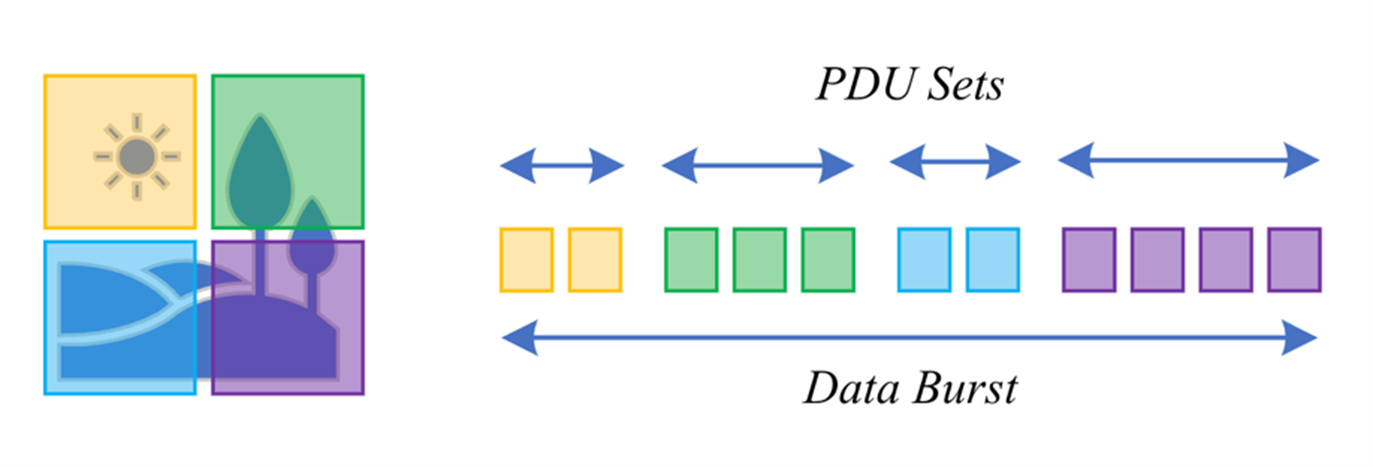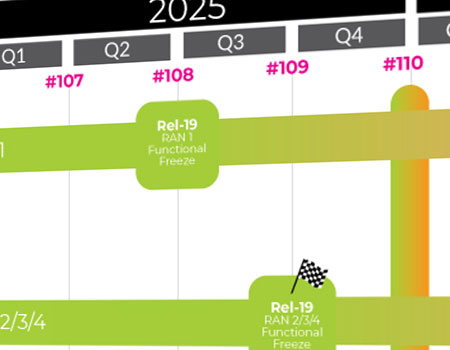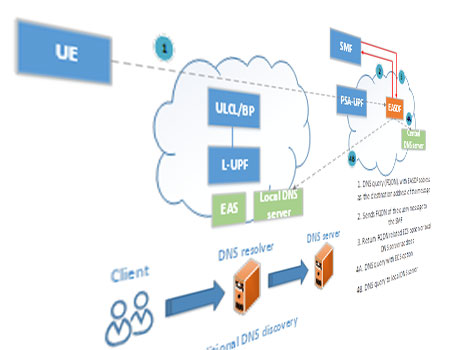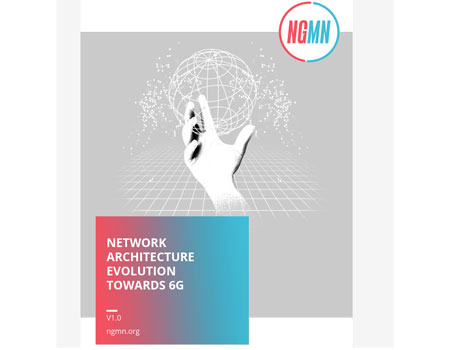By Benoist Sébire, WI Rapporteur RAN2 (Nokia) and Huilin Xu, WI Rapporteur RAN1 (Qualcomm)
First published May 2023, in Highlights Issue 06
The combination of high bit rates and low latency required by eXtended Reality (XR) services poses new challenges to wireless access. To quantify these challenges, 3GPP has extensively studied the support of XR services in several working groups (RAN1, RAN2, SA2, SA4) and the recently approved Rel-18 work items will introduce the first mechanisms that these studies have identified as beneficial.
This article will explain what those RAN mechanisms are.
XR Overview
Extended Reality (XR) refers to all real-and-virtual combined environments and human-machine interactions generated by computer technology and wearables. XR is an umbrella term for different types of realities: Virtual reality (VR), which aims at giving the user the feeling of being physically and spatially there, Augmented Reality (AR), which provides a user with additional content overlaid upon their environment, and Mixed Reality (MR), which is an advanced form of AR where some virtual elements are inserted and can be interacted with. In all cases, XR content is generated by XR engines, which typically include a rendering engine for graphics, an audio engine for sound, and a physics engine for emulating the laws of physics.
An acceptable XR experience requires frame rates of at least 60fps and 2K resolution per eye, while a truly immersive one requires 90 or even 120fps with resolutions up to 8K per eye to remove graphics pixelation. This translates into bit rates of tens of Mbps. Creating content at such bit rates requires powerful XR engines which typically cannot be hosted on the user device, for instance due to heat dissipation and battery constraints. Thus, typically, the rendering is assisted or split across the network: the UE sends real-time sensor data in uplink to the cloud, which then performs rendering and produces the multimedia data which is sent back to the user devices for display in downlink as shown on Figure X below. It is then the responsibility of NR to carry these tens of Mbps.

Figure X: Split Rendering
While this helps to reduce the processing requirements on the device, it also imposes additional requirements in terms of delay. Indeed, to provide an immersive experience as well as reduce the chances of motion-sickness, the motion-to-photon latency has an upper limit of 20ms. With split rendering, this includes the time for the UE to send sensor data in uplink, transport and processing delay in the core network as well as sending back the multimedia data to the user device for display. For the RAN, this translates into very short delays in both uplink and downlink, in the order of 10-15ms.
In summary, with split rendering, XR services require RAN to guarantee tens of Mbps with a latency in the order of 10ms measured at transport/application layer. The combination of such high bit rates and low latency is a new challenge for NR.
3GPP RAN Enhancements
XR Awareness
In both uplink and downlink, XR-Awareness contributes to optimizations of radio resource and relies on the notions of PDU Set and Data Burst defined by 3GPP Working Group SA2 (See Page 16, 5G architecture support for XR and media services). PDU sets and Data Bursts enable the RAN to identify the PDUs which carry content that the application processes as a single unit (e.g. portion of an image, an audio frame) and the duration of a data transmission, respectively as examplified on Figure Y below.

Figure Y: PDU Sets and Data Burst Example
With the PDU Set Integrated Handling Indication (PSIHI), RAN knows whether all PDUs of the PDU Set are needed for the usage of PDU Set by application layer. This allows RAN to stop transmitting a PDU set as soon as one of the PDU of the set is known to be lost (as other PDUs would be useless anyway). Finally, each PDU set can be signalled with an importance, which identifies the relative importance of a PDU Set compared to other PDU Sets. The RAN may then use it in case of congestion to discard the PDU sets of lower importance.
Power Saving
Various power saving techniques were evaluated during the Rel-18 XR study. It is shown that aligning periodicity between UE DRX and the XR traffic is critical for both power saving and capacity performance. Indeed most XR frame rates (e.g. 60, 90 and 120fps) correspond to periodicities which are – unlike what has been specified so far - not an integer (16.66, 11.11 and 8.33ms respectively) and new mechanisms will be introduced to deal with these periodicities.
On top of this, PDCCH monitoring adaptation techniques including search space set group (SSSG) switching and PDCCH skipping can be applied. SSSG switching together with PDU Set information can adjust PDCCH monitoring time to counter the relatively large jitter of XR PDU arrivals. Specifically, sparse to dense PDCCH monitoring can be triggered as soon as a new XR PDU is ready for transmission. Additionally, the end of a data burst can be used to trigger PDCCH skipping to stop the UE DRX active time earlier than originally configured.
Capacity
For XR capacity enhancements, two PHY related techniques are being specified including the configured grant (CG) period with multiple PUSCH occasions and the UCI indicating unused CG PUSCH occasion(s). The CG period with multiple PUSCH occasions provides periodic resources for XR UL data transmission with low signalling overhead. Depending on the actual size of the UL data, the UE may indicate a subset of the PUSCH occasions as unused in the UCI. After the gNB receives the UCI, it can reallocate partial or all the unused UL resources to other users so that overall capacity of the cell is improved. This also helps gNB save energy by skipping PUSCH detection over unused PUSCH occasions. For DL, the conventional dynamic grant scheduling is shown to have sufficient flexibility in Rel-18 XR study and hence no PHY related enhancements were introduced.
At layer 2, the main capacity enhancements help the gNB be aware of what the UE must transmit. Given the very high bit rates and low latency requirements of XR services, it is indeed crucial to tailor the grant precisely to minimise padding and delay. To achieve this, the Buffer Status reports will be enhanced to reduce the quantisation errors, and delay knowledge of the data buffered will also be reported.
Conclusion
NR can successfully provide high bit rates for some services and low latency for some others, but these two requirements had not been combined so far. With XR, this is about to change, and this article has reviewed the RAN enhancements that will allow NR to face these new challenges. On average, it is estimated that with those new enhancements, gains of 10~30% can be achieved in power saving and capacity.


 Technology
Technology




